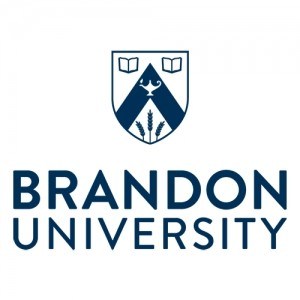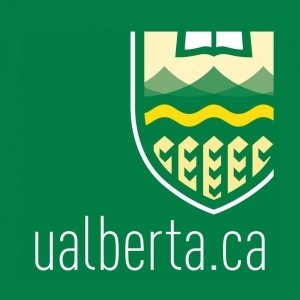Photos of university / #brandonuni
The Bachelor of Arts in Visual and Aboriginal Art at Brandon University offers students a unique opportunity to explore the rich traditions and contemporary practices of Indigenous and visual arts. This program is designed to foster a deep understanding of Indigenous cultural expression alongside traditional and modern art techniques, encouraging students to develop their own artistic voices while gaining a solid foundation in art history, theory, and practice. Students will engage with a diverse range of mediums, including painting, sculpture, printmaking, and digital art, emphasizing the importance of storytelling, cultural heritage, and community engagement within Indigenous art contexts. The curriculum integrates theoretical courses on the history and significance of Aboriginal art, paired with practical studio courses that develop technical skills and creativity. Throughout the program, students will have opportunities to participate in exhibitions, internships, and community projects, enhancing their professional portfolios and preparing them for careers in the arts sector, education, curation, or further academic study. The faculty members are experienced artists and scholars dedicated to mentoring students and promoting the significance of Indigenous perspectives in the broader art world. With access to campus facilities that include well-equipped studios, libraries, and digital resources, students are supported in their artistic pursuits and research. The Bachelor of Arts in Visual and Aboriginal Art aims to nurture innovative artists who are mindful of cultural heritage and societal issues, fostering a commitment to both personal artistic growth and community development. Graduates will be well-equipped to contribute meaningfully to the fields of arts, culture, and Indigenous revitalization, making this program a vital stepping stone for those passionate about Indigenous and visual arts.
The Visual Arts program at Brandon University offers students a comprehensive and immersive educational experience designed to foster creative expression, technical skill development, and critical thinking. This program emphasizes the importance of both traditional and contemporary art practices, encouraging students to explore a wide range of mediums including drawing, painting, sculpture, printmaking, and digital art. Students have access to state-of-the-art facilities and resources, enabling them to experiment and refine their artistic techniques in a supportive environment. The curriculum is structured to provide a strong foundation in art history, theory, and criticism, allowing students to contextualize their work within broader cultural and historical frameworks. In addition, the program promotes engagement with the local and global art communities through exhibitions, internships, and collaborative projects, preparing graduates for a variety of careers in the arts sector. Faculty members are accomplished artists and scholars dedicated to mentoring students and fostering their individual artistic voices. The program also offers opportunities for students to participate in interdisciplinary projects, combining visual arts with other fields such as technology, education, and community development. Students are encouraged to develop their portfolios and participate in exhibitions throughout their studies, building a professional presence that supports their future endeavors. Upon completion, graduates are well-equipped to pursue careers as professional artists, art educators, curators, or to continue their education at graduate levels. Brandon University’s Visual Arts program is committed to nurturing innovative, reflective, and socially engaged artists who can contribute meaningfully to the cultural landscape.
Program requirements for the Bachelor of Arts in Visual Art at Brandon University include completing a total of 120 credit hours, which encompasses both core courses and electives. Students must, as part of their coursework, engage in foundational studio courses that develop technical skills, including Drawing, Painting, Sculpture, and Printmaking. These provide essential hands-on experience and foster artistic development. The program emphasizes the importance of study in art history and theory, requiring students to complete courses that cover major periods, movements, and critical perspectives within art. Throughout their academic journey, students are encouraged to build a diverse portfolio demonstrating their skills, conceptual understanding, and artistic evolution.
In addition to studio and theory classes, students are required to participate in practical workshops and critique sessions that promote peer review and professional growth. The program encourages participation in exhibitions, either within the university's gallery or external venues, to provide real-world experience and exposure. A practicum or internship component is often recommended to facilitate connections with the local art community and galleries, although it is not strictly mandatory.
Students must maintain a minimum cumulative GPA as specified in the university's academic regulations, generally around 2.0, to remain in good standing. Upper-year students are expected to complete capstone projects that showcase their skills and conceptual development in a culminating exhibition or presentation. Regular advisement sessions with faculty are advised to ensure students meet all progression requirements and receive guidance on their artistic direction and professional development.
In terms of language proficiency, students may need to demonstrate adequate command of English, especially if they are international applicants. Additionally, students should review specific course prerequisites before enrollment to ensure they have the necessary background. While the program is designed to be comprehensive and flexible, students are encouraged to supplement their studies with electives in related fields such as design, digital media, or multicultural arts to broaden their artistic perspective. Overall, completing the program successfully equips graduates with a strong foundational knowledge of visual arts, practical skills for artistic careers, and the critical thinking necessary to succeed as professional artists or art educators.
Want to improve your English level for admission?
Prepare for the program requirements with English Online by the British Council.
- ✔️ Flexible study schedule
- ✔️ Experienced teachers
- ✔️ Certificate upon completion
📘 Recommended for students with an IELTS level of 6.0 or below.
Financing studies for the Visual or Aboriginal Art program at Brandon University typically include a combination of scholarships, bursaries, loans, and work-study opportunities. Students are encouraged to apply for various scholarships specific to the faculty of Arts, as well as external funding sources such as provincial and federal government financial aid programs. Brandon University offers a range of merit-based scholarships for incoming and continuing students, which can significantly offset tuition costs. Bursaries are also available for students demonstrating financial need, ensuring that access to education is equitable.
In addition to institutional aid, students may be eligible for Canada Student Loans and Manitoba Student Aid, which provide financial assistance based on income, family size, and other criteria. Work-study programs are available for students interested in gaining practical experience while earning income, with positions in university galleries, art departments, or administrative offices. Part-time employment opportunities within the university or community can also help support students financially during their studies.
International students should explore specific scholarship options available through Brandon University’s International Office, as well as external sources. Tuition fees vary depending on the program's duration, course load, and residency status, and students are advised to consult the university’s financial aid office for detailed information and application procedures. The university also offers financial planning services to help students budget and manage their expenses throughout their studies. Overall, the financial support available at Brandon University aims to ensure that students in the Visual or Aboriginal Art program can focus on their creative development without undue financial stress.
The Visual and Aboriginal Art program at Brandon University offers students an opportunity to explore diverse artistic practices, traditional and contemporary Indigenous art forms, and the cultural contexts that shape Aboriginal art. This program is designed to foster both technical skills and critical understanding of the significance of visual arts within Indigenous communities and beyond. Students in this program can expect to engage with a variety of mediums, including painting, drawing, sculpture, printmaking, and digital media, guided by experienced faculty members who are scholars and practitioners in the field of Aboriginal art. The curriculum emphasizes the development of individual artistic voice while respecting the cultural heritage and protocols associated with Indigenous art traditions.
Brandon University’s program aims to provide a comprehensive education that combines studio practice, historical knowledge, and cultural awareness. It prepares students for careers in the arts, including art creation, curation, gallery management, arts administration, and education. The program encourages participation in community projects, exhibitions, and collaborations with local Indigenous communities, fostering a greater understanding of the role of art in cultural identity and social change.
Students may also have access to related resources such as the university’s art galleries, studios, and library collections, which include materials focused on Indigenous art history and contemporary practices. With a strong emphasis on experiential learning, students are encouraged to develop critical perspectives on issues related to Indigenous representation, cultural preservation, and artistic innovation. Graduates of the Visual and Aboriginal Art program are well-equipped to contribute significantly to the arts sector and to advocate for the celebration and revitalization of Indigenous art forms.


